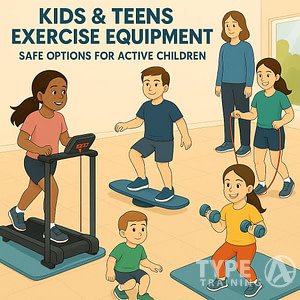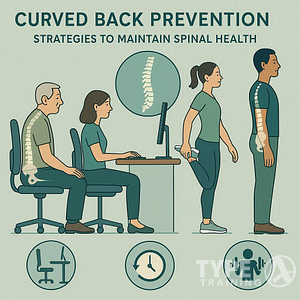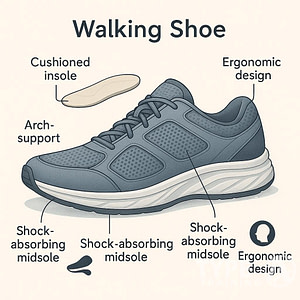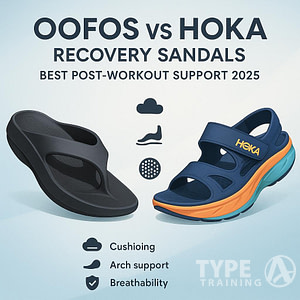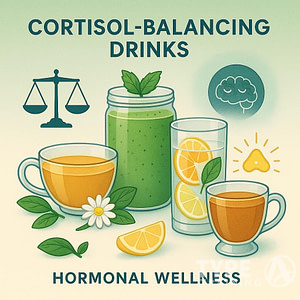Muscle cramps in legs can strike unexpectedly and leave you in pain.
Often occurring in the calves and hamstrings, muscle cramps in legs are sudden, involuntary muscle contractions that can disrupt daily activities or even wake you from sleep.
Common causes include fatigue, dehydration, and a lack of electrolytes.
Muscle cramps in legs are commonly caused by fatigue, dehydration, and a lack of electrolytes.
Popular posts:
To get rid of leg muscle cramps, try flexing the affected muscle, massaging the area, and applying heat or ice.
Remember, recognizing muscle cramps in legs early can help in taking appropriate action.
These methods can help relax the tightened muscles and alleviate pain.
Additionally, staying hydrated and ensuring you have a balanced intake of electrolytes like potassium, magnesium, and calcium can prevent future cramps.
Avoiding muscle cramps in legs requires you to stay hydrated and maintain a balanced intake of electrolytes.
Prevention of leg cramps involves maintaining proper muscle health.
You can reduce muscle cramps in legs by maintaining proper muscle health.
Warm up before exercise with light activities like walking or jogging in place, and stretch your leg muscles post-workout.
If you experience cramps at night, stretching before bed might help.
Addressing muscle cramps in legs through stretching before bed might help.
For more detailed guidance, Cleveland Clinic provides useful tips on preventing and treating leg cramps at night.
For more detailed guidance on muscle cramps in legs, Cleveland Clinic provides useful tips.
Understanding Muscle Cramps
Muscle cramps are sudden and involuntary contractions of one or more muscles, causing significant discomfort. Understanding their causes and symptoms can help you manage and prevent them more effectively.
By understanding muscle cramps in legs, you can manage and prevent them more effectively.
Causes of Muscle Cramps
Muscle cramps can occur due to several factors.
Dehydration is a common cause, particularly after intense exercise or on hot days. When you sweat, you lose essential electrolytes like potassium, calcium, and magnesium. This imbalance can lead to muscle spasms.
Muscle cramps in legs can occur due to several factors including dehydration.
Aging impacts muscle functionality and flexibility, causing cramps more frequently.
Moreover, medical conditions such as diabetes or peripheral artery disease can lead to chronic muscle cramps. Even medications like diuretics and statins list muscle cramping as a side effect.
Conditions like diabetes can lead to chronic muscle cramps in legs.
Personal Example:
I’ve experienced muscle cramps after long runs during summer. Staying hydrated and maintaining electrolyte levels made a significant difference.
By staying hydrated, I reduced muscle cramps in legs during long runs.
I started incorporating electrolyte-rich foods into my diet, such as bananas for potassium and leafy greens for magnesium.
Symptoms and Diagnosis
Muscle cramps manifest as a sudden, sharp pain, typically in your legs. They can wake you from sleep or catch you off guard during physical activity.
The affected muscle may feel hard to the touch due to intense contraction.
To diagnose muscle cramps, your doctor will review your medical history and conduct a physical exam.
Monitoring muscle cramps in legs is important for effective management.
Blood tests might be required to check your electrolyte levels and ensure that you don’t have an underlying condition disrupting your muscle function.
Ultrasounds or MRI scans can also help identify abnormalities if needed.
Preventative Measures
Preventing muscle cramps in legs can be achieved with a balanced diet.
Effective prevention of muscle cramps in your legs includes proper hydration, a balanced diet rich in essential minerals, regular exercise, appropriate warm-up routines, and lifestyle adjustments that can mitigate factors contributing to cramps.
Hydration and Diet
Maintaining adequate hydration is crucial for muscle function.
Hydration plays a crucial role in preventing muscle cramps in legs.
You should drink enough water throughout the day, especially during and after exercise. Proper hydration helps your muscles contract and relax smoothly.
Incorporate foods rich in potassium, magnesium, and calcium—a deficiency in these minerals can trigger cramps. Bananas, leafy greens, nuts, seeds, and dairy products are great options.
Limit your intake of caffeine, as it can contribute to dehydration. Instead, focus on a diet that supports overall muscle health and functionality.
To prevent muscle cramps in legs, limit your caffeine intake.
Exercise and Warm-Up Techniques
Consistent exercise helps in preventing muscle cramps.
Engaging in regular physical activity ensures that your muscles stay strong and loose.
Regularly engaging in physical activity can help relieve muscle cramps in legs.
Prior to any workout, perform a proper warm-up routine.
Walking in place or engaging in a slow jog can prepare your muscles for more intense activity. After exercising, spend a few minutes stretching your leg muscles.
Stretching helps to alleviate muscle cramps in legs effectively.
If you tend to get cramps at night, adding a set of stretches before bed can be beneficial.
Stretching promotes muscle flexibility, reducing the likelihood of cramps.
Lifestyle Modifications
Adapting certain lifestyle habits can significantly reduce the incidence of leg cramps.
Improving sleep hygiene can help reduce muscle cramps in legs.
Ensure you are not sitting for prolonged periods; take regular breaks to move around.
Consider using
Engage in light exercise, such as riding a stationary bike, before bedtime to keep your muscles active.
Improving your sleep hygiene can also help. A consistent sleep schedule and a comfortable sleeping environment can reduce muscle cramp occurrences.
Immediate Relief Strategies
To alleviate muscle cramps in legs, consider using heat therapy.
To get rid of muscle cramps in your legs, consider several immediate relief strategies. These include stretching and massaging the affected muscle, applying heat or cold therapy, and using medications or supplements that can alleviate pain and discomfort.
Stretching and Massage
When a muscle cramp occurs, stretching the affected area can help relieve the tightness.
For a cramped leg, sit on the floor and stretch your leg out in front of you. Keep your leg straight and gently pull your foot back towards you.
Stretching the cramped leg can significantly relieve muscle cramps in legs.
Massage the cramped muscle to increase blood flow and relieve tension.
Use your fingers to apply gentle pressure in a circular motion along the muscle. This can help to relax the muscle and reduce discomfort quickly.
Heat and Cold Therapy
Applying a heating pad can relax muscles and reduce cramping.
You can also take a warm bath to achieve the same effect. Heat therapy increases blood circulation, which helps to relax tight muscles.
On the other hand, using a cold compress, such as a bag of ice wrapped in a towel, can numb the pain and reduce inflammation.
Applying a warm towel can ease muscle cramps in legs quickly.
Alternate between heat and cold for maximum relief, starting with heat to relax the muscle, followed by cold to reduce any swelling.
Medication and Supplements
Over-the-counter pain relievers like ibuprofen or acetaminophen can help manage the pain associated with muscle cramps.
These medications can provide temporary relief by reducing inflammation.
Magnesium supplements are another effective remedy. Magnesium plays a key role in muscle function and can help prevent cramps.
Magnesium helps support muscle function and prevent muscle cramps in legs.
Increasing your intake of fluids and staying hydrated can also prevent future cramps.
Dehydration is a common cause of muscle cramps, so drinking plenty of water is essential.
When to See a Doctor
Understanding when to seek help for muscle cramps in legs is crucial.
You should consider professional healthcare if your muscle cramps are frequent, severe, or accompanied by other concerning symptoms. Understanding when to seek medical advice can help address potential underlying health issues.
Identifying Serious Conditions
If muscle cramps cause severe discomfort, occur frequently, or don’t improve with self-care, it may indicate a serious medical condition.
Frequent muscle cramps in legs may indicate a serious medical condition.
Signs like leg swelling, redness, or skin changes suggest you should consult a healthcare provider.
Symptoms such as muscle weakness or numbness may point to nerve or muscle disorders like ALS or spinal issues.
In some cases, cramps may be related to chronic conditions such as diabetes, hypothyroidism, or even kidney failure.
Professional Treatment Options
When you see a doctor, they may conduct several diagnostic tests to understand the cause of your cramps.
Blood tests can detect deficiencies in electrolytes, while nerve studies can identify neuromuscular disorders.
Treatment options vary depending on the underlying cause.
Addressing muscle cramps in legs with proper medical care is essential.
For instance, muscle relaxants, stretching exercises, and massage may be recommended to alleviate discomfort due to muscle spasms.
If medications are contributing to the issue, your provider may adjust or change your prescription.
In some cases, managing a chronic condition like diabetes or hypothyroidism can help reduce cramp frequency.
Consulting a healthcare professional ensures you receive a tailored treatment plan to address your specific symptoms and medical history.
A tailored treatment plan can effectively address muscle cramps in legs.
Home Remedies and Lifestyle Tips
Addressing muscle cramps in your legs can be managed with various strategies, many of which involve looking at your diet, types of exercise, and methods to reduce stress.
Implementing specific lifestyle changes can combat muscle cramps in legs.
Dietary Adjustments
Potassium, calcium, and magnesium are crucial minerals that help your muscles function properly.
Incorporating potassium-rich foods can prevent muscle cramps in legs.
Eating a balanced diet that includes foods such as bananas, avocados, and spinach can provide the required potassium. Dairy products like milk and cheese are rich in calcium, and nuts and seeds are excellent sources of magnesium.
Hydration is vital to avoid muscle cramps.
Hydration is key to avoiding muscle cramps in legs.
Drink plenty of water throughout the day to prevent dehydration, especially if you’re engaging in physical activity.
Consider drinking electrolyte-enriched beverages during intense exercises to maintain your mineral balance.
Electrolyte-enriched beverages can help with muscle cramps in legs.
Physical Activity Suggestions
Incorporate regular stretching into your daily routine.
Gentle stretches can improve muscle flexibility and reduce the occurrence of cramps.
Focus on stretches for your legs, especially your calves and thighs.
An effective stretch is to stand a few feet away from a wall, lean forward, and touch the wall with your outstretched arms while keeping your feet flat on the ground.
Relaxation and Stress Management
Stress can contribute to muscle tension and cramps.
Practicing relaxation techniques such as deep breathing, meditation, or yoga can help mitigate stress and promote muscle relaxation.
Regular relaxation can improve your overall muscle tone and lessen the frequency of cramps.
Adequate sleep is also essential for muscle recovery and stress reduction.
Aim for 7-9 hours of sleep each night to allow your body to fully repair and rejuvenate.
If you experience persistent muscle cramps, consider creating a relaxing pre-sleep routine to improve your sleep quality.
Frequently Asked Questions
Learn key strategies for alleviating leg cramps, identify warning signs that may require medical attention, and discover effective home remedies and preventive measures.
What immediate actions can alleviate leg cramps?
To quickly alleviate leg cramps, gently stretch and massage the affected muscle.
For a calf cramp, keep your leg straight and pull the top of your foot towards your face.
Adding to this, standing and pressing down firmly on the cramped leg can also help.
What are the warning signs of leg cramps that indicate a more serious issue?
If leg cramps are frequent, severe, or accompanied by swelling, redness, or skin changes, you should seek medical attention.
These signs could indicate underlying conditions such as circulation issues or nerve problems.
Which home remedies are effective for quick relief from leg cramps?
Effective home remedies include applying a warm towel or heating pad to the affected area.
Taking a warm bath or shower can relax your muscles.
Additionally, massaging the cramped muscle or using a cold pack for soreness can provide relief.
What deficiencies in the body are commonly associated with the occurrence of leg cramps?
Leg cramps are often linked to deficiencies in electrolytes such as potassium, calcium, and magnesium.
Ensuring adequate intake through diet or supplements can prevent these cramps.
Hydration is also key, as water helps maintain electrolyte balance.
What beverages are recommended to prevent or reduce muscle cramps?
Hydration is essential for preventing muscle cramps.
Water, electrolyte-enhanced drinks, and beverages rich in essential minerals like potassium can help.
Coconut water and sports drinks can replenish electrolytes lost through sweat.
What are the primary causes of nocturnal leg cramps?
Nocturnal leg cramps can be caused by prolonged sitting, dehydration, or electrolyte imbalances. Muscle fatigue and certain medications also contribute.
Preventing muscle cramps in legs involves staying active and hydrated.
Stretching before bed and staying hydrated can help prevent these nighttime cramps.








